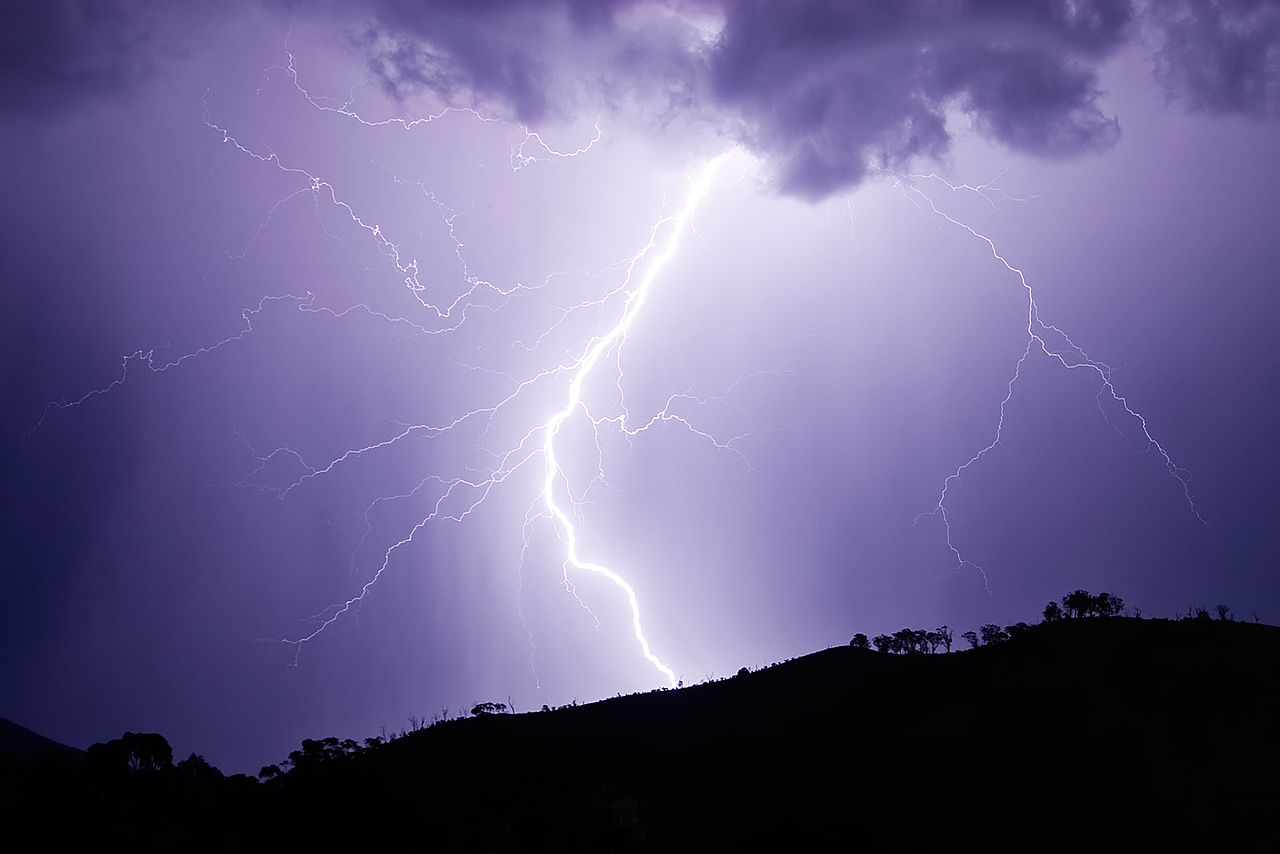Worried about lightning striking your home? Consider a traditional remedy
Image: Wikimedia Commons
Lightning might be a lot more common than most people think — with almost 2,000 thunderstorms pounding the Earth at any given moment, it means there are about 50 lightning strikes per second, and some of it could be heading your way. But installing a lightning rod may strike away some worries about a bolt heading for your home, says a Texas A&M University lightning expert.
Richard Orville, professor of atmospheric sciences who has studied lightning for more than 35 years and established the National Lightning Detection Network, believes that lightning rods are useful tools for negating the positive power of a lightning bolt. More than 20 years ago, Orville led key studies in the physics of lightning and helped to establish the network which is located in 48 states and Canada and detects most (95 percent) lightning ground strikes.
“Lightning rods provide a safe path for lightning to ground,” he points out.
“They are placed on the highest point of a building, and an upward leader from the rod connects with a downward stepped leader. The rod —which is grounded — provides a safe path for the electricity to reach the ground.”
Orville knows from experience.
His own home not far from the Texas A&M campus was hit by a powerful lightning bolt in 2008, and it smashed into a tree 18 feet from his house, and from there it did damage to his swimming pool lights and his home’s electrical system. The final repair bill was about $4,500.
“The bolt peak current measured 158,000 amps, and we know that exactly because it was recorded by the lightning network,” he adds. “Most bolts are in the 25,000 to 30,000 amp range, so it was many times larger than normal. A lightning rod might have taken the strike and saved me the financial expense. We also lost the tree.”
Few homes today are equipped with a lightning rod, but if you live in an area where thunderstorms are common, it might be a good idea to have one, he notes.
“If you have a metal roof on your home like some people do, it would certainly be worth considering having one installed,” he says, “because the chances are greater it will be hit. In Texas, we have thunderstorms 12 months out of the year, so we get our share of lightning.”
He says Houston is the lightning capital of Texas, and the city gets about 20 strikes per square mile each year.
Very tall structures are almost certainly going to be hit by lightning, he adds. New York’s Empire State Building, at more than 1,400 feet tall, has been hit by lightning thousands of times since it opened in 1931, but it was built with lightning rod features.
“Today, most skyscrapers in big cities include such features, and these include lightning rods,” Orville says. “It’s a standard building procedure.
If you want a lightning rod for your home, kits are available at many building supply centers or can be ordered online.
“They can give you peace of mind because they do work,” Orville confirms.
“I would recommend having more than one along a roof line especially if it is a large home, and unless you are a super duper handyman, it’s one job a professional installer should do.
#TAMUresearch


